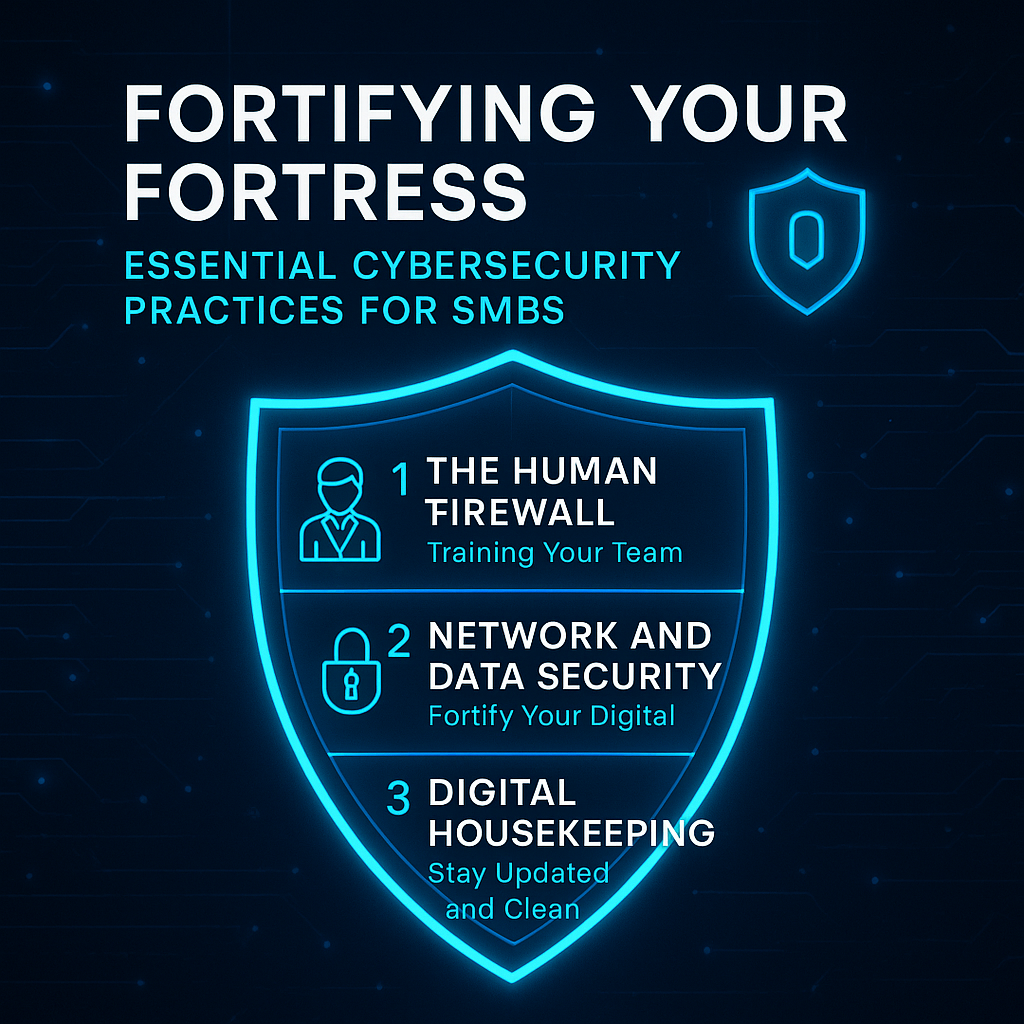Fortifying Your Fortress: Essential Cybersecurity Practices for SMBs
Mr. Diyan Ahmed
10/4/20253 min read


SEO Idea: A non-technical guide for small and medium-sized businesses on crucial cybersecurity measures. The blog will explain common threats and provide actionable, easy-to-implement steps to protect digital assets, focusing on practical, non-technical best practices.
SEO Keywords: small business cybersecurity, data protection, cybersecurity best practices, network security, phishing prevention, digital risk management, SMB security, data breach, cyber threats, ransomware.
For a small or medium-sized business (SMB), a single cyberattack can be devastating, leading to financial loss, damaged reputation, and even closure. Unlike large corporations with dedicated security teams, SMBs often lack the resources to combat sophisticated threats. But you don't need to be a tech wizard to protect your digital assets. By focusing on a few key cybersecurity best practices, you can significantly reduce your risk. This guide will walk you through the most important, non-technical measures for fortifying your business's digital fortress.
1. The Human Firewall: Training Your Team 🧑🏫
Your employees are both your biggest asset and your greatest vulnerability. A staggering number of cyberattacks are successful due to human error. You can build a "human firewall" by empowering your team with knowledge.
Phishing Prevention: The most common form of attack is a phishing email. Train your employees to spot the red flags: urgent language, suspicious links, grammatical errors, and requests for sensitive information. Teach them to hover over links to see the real URL and to never download attachments from unknown senders. Encourage a culture where employees feel comfortable questioning a suspicious email and reporting it immediately.
Strong Password Policies: Implement and enforce a strong password policy. This means passwords that are at least 12 characters long and include a mix of uppercase letters, lowercase letters, numbers, and symbols. Even better, use a password manager to generate and store complex, unique passwords for every account.
2. Fortify Your Digital Doors: Network and Data Security 🔒
Just as you lock the doors to your physical office, you must secure your digital entry points. This is where network security and data protection come in.
Secure Wi-Fi Networks: Make sure your business Wi-Fi network is secure. Use a strong password and hide the network name (SSID) so it's not publicly broadcast. Consider setting up a separate guest network for visitors to keep your main business network isolated.
Multi-Factor Authentication (MFA): This is one of the most effective ways to prevent unauthorized access. MFA requires a second form of verification beyond a password, such as a code sent to your phone or a fingerprint scan. Enable MFA on all critical accounts, especially for email and financial services.
Regular Backups: The best defense against ransomware—where hackers encrypt your data and demand a ransom—is a solid backup strategy. Regularly back up all your critical data to an external hard drive or a secure cloud service. Follow the 3-2-1 rule: keep 3 copies of your data, stored on 2 different media types, with 1 copy kept off-site.
3. Digital Housekeeping: Stay Updated and Clean 🧹
A key part of digital risk management is keeping your software and systems clean and up-to-date.
Software Updates: Software vendors constantly release updates to patch security vulnerabilities that hackers can exploit. Enable automatic updates for all your operating systems and applications. Ignoring these updates is like leaving your doors unlocked.
Antivirus and Anti-Malware: Every computer in your business should have robust antivirus and anti-malware software installed. This software acts like a digital bodyguard, scanning for and neutralizing threats before they can cause damage.
Conclusion: A Proactive Approach to Security
Small business cybersecurity is not a one-time task; it's an ongoing process. By implementing these practical measures—employee training, securing your network, and keeping your systems updated—you can build a resilient defense against the vast majority of cyber threats. A proactive approach to data protection not only safeguards your business but also builds trust with your customers and ensures your long-term success.
Connect
Partnering for innovation across industries.
Explore
Discover
+923001534092
© 2025. All rights reserved.
